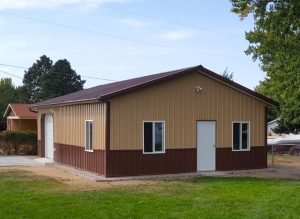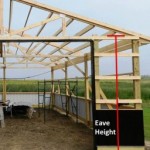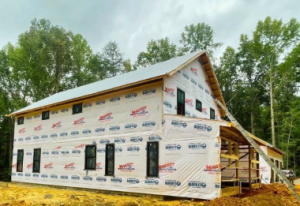Hanging Single-Hung Windows to Slide Horizontally
You order a 4’ x 4’ sliding window for your new post frame building or barndominium. Depending upon your geographical location, you will assume this window opens up-and-down (Eastern U.S.) or side-to-side (Western U.S.). Well, we all know what happens when we assume.
It is critical to clearly understand in what direction windows will be opening, at time of order.
Single-hung windows contain two large sections oriented vertically, one atop another, each containing a windowpane. Usually only the bottom window section moves. When it comes to installation, technically speaking you can place a single-hung window any way you want. Horizontal installation of a single-hung window, however, can lead to some serious problems, most notably a high degree of moisture penetration and resultant issues.

When installed horizontally, a single-hung window opens by sliding side to side. If you own a single-hung window and want to install a side-opening window in a space whose length is longer than its height, using your single-hung window for this purpose may seem like a good idea. You can install a single-hung window horizontally just as easily as you can install it vertically, but really you should avoid horizontal installation.
Biggest problem with installing any window improperly arises from the window’s orientation, including horizontal installation of single-hung windows. All manufacturers design windows to work in a specific direction when it comes to preventing water and moisture from entering your building through or around a window. When installing a single-hung window horizontally, it is incorrectly oriented. Due to this, this window can provide no protection from moisture. Copious amounts of water may leak into your building, and moss, mold and more may grow in moisture building up around your window.
Numerous other problems may arise from improperly installing a window. Notably, manufacturers usually automatically void product warranty if it’s installed incorrectly. So, if you install your single-hung window sideways and things go gunny bag, you can’t return or exchange your window because you violated warranty terms. Furthermore, when you install a single-hung window sideways, the window sill is incorrectly located, meaning, essentially, the window has no sill. This can lead to a buildup of dirt, pollen, debris and other filth and allergens around your window.
 While there does exist an actual ANSI (American National Standards Institute) definition of Eave Height – most builders and vendors are unawares or just plain choose not to use it. Somewhere your agreement should spell out what is proposed or provided so all have a clear understanding. (Please read more here:
While there does exist an actual ANSI (American National Standards Institute) definition of Eave Height – most builders and vendors are unawares or just plain choose not to use it. Somewhere your agreement should spell out what is proposed or provided so all have a clear understanding. (Please read more here:  Entry door width and heights, is door wood, steel, aluminum, vinyl covered, fiberglass? Jambs wood, steel, aluminum, vinyl covered wood? Doors and jambs finish painted or primed only? Crossbucks? Raised Panel? Glass? Wind rated? R value? Keyed lockset, dead bolts?
Entry door width and heights, is door wood, steel, aluminum, vinyl covered, fiberglass? Jambs wood, steel, aluminum, vinyl covered wood? Doors and jambs finish painted or primed only? Crossbucks? Raised Panel? Glass? Wind rated? R value? Keyed lockset, dead bolts? I have never sold a double hung window to a client, installed one as a builder, or owned a building which had double hung windows.
I have never sold a double hung window to a client, installed one as a builder, or owned a building which had double hung windows.





